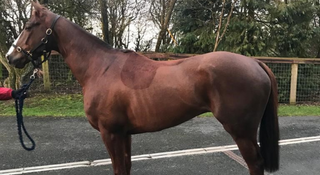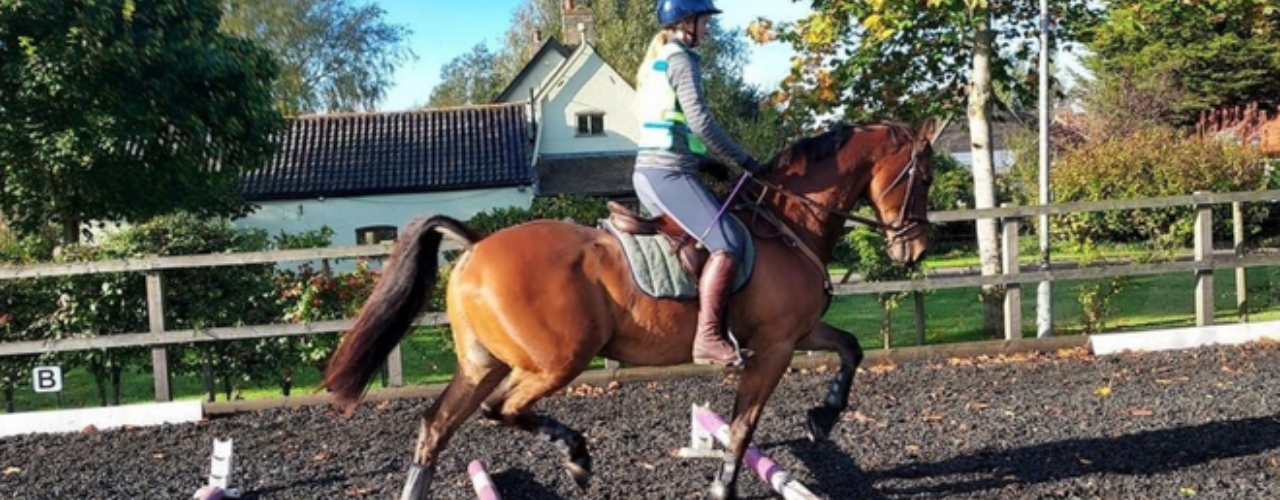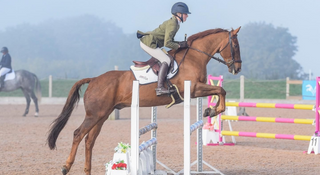
Retraining a racehorse
Retraining a racehorse to become a leisure or competition horse can be very rewarding and enjoyable.
02 December 2021
Read More
What is Polework?
Polework is a fun and different way to exercise both horse and rider. It involves setting out variations of poles on the ground to strengthen and enhance both dressage and jumping techniques. It is also a great way of increasing fitness for both rider and horse and helps horse and rider develop a stronger partnership.
Why is polework good for my horse?
Most importantly polework helps with keeping tempo and rhythm the same, which is so important in any discipline. It encourages your horse to use itself in the correct way and to engage its hind legs and create elevation (a more exaggerated movement from its natural paces). It also highlights any straightness issues, such as drifting to one side, which can then be corrected with the relevant exercises. Polework will build up and strengthen the horse’s abdominal and top line muscles and can also stimulate the horse mentally as it is a varied activity.
Why is it good for me?
Polework challenges your balance; you need to be able to keep up with your horse, as it exaggerates its natural movement over the poles. It will highlight if you are getting in front or behind the movement. When it feels like you are completely in control of your body and are together with your horse it’s probably correct -repetition is key!
Coming into and riding away from poles will help you to ride straight lines over obstacles, which will help with jumping later on. Canter poles are a good way to get your eye in for jumping fences without worrying about the fence itself. Polework will help build up core strength, stamina and a real connection with your horse. It is mentally very beneficial as it is challenging, but it's also fun and can bring a real sense of achievement.
Try these exercises with your horse
Exercise one: Trot poles on the straight
Set up 4 poles in a straight line with 5 (4 for shorter striding ponies) pigeon steps (heel to toe) between them and trot over these 4 times on each rein. The horse should get one step in each gap. Always finish on a good one. This exercise helps with straightness.
Exercise two: Canter poles
Set up 3 poles in a straight line with 10 pigeon steps (9 for shorter striding ponies) between them. First trot through them twice on each rein. The horse should take two steps in each gap. Next, canter through them and try and find the right canter that matches the striding; it should feel nice and lifted, like you are cantering through waves. Do this three times on each rein. Always finish positively. This exercise helps with rhythm.
Exercise three: The Triangle
Use three poles to make a triangle; one pole straight and the other two to a point. To make it slightly easier put another pole next to the point at the same angle as the bottom of the triangle. You may want to walk through first if your horse hasn’t seen this exercise before just so it understands the question being asked. Then build up to trot through base side of the triangle first, and then do it the other way. You will find it is harder to keep straight at the pointed end. The horse should fit two or three steps in the triangle. This exercise helps with accuracy.
Exercise four: The fan
You will need around three or four poles for this exercise. Set the poles up at the same distance as Exercise 1 with 5 pigeon steps in the middle but this time you create a fan shape on a circle (if your horse struggles with this then do 10 pigeon steps between).
Use the middle to begin with, then move on to each side to collect or extend while keeping a bend. I like to do two sets on a circle for example one at A and one at X. This is quite an intense workout for the horse so do a few sets then have a rest before repeating. This exercise improves suppleness.
All these exercises can be done individually or can be set up around an arena or field and tackled in turn like a little course.
If your horse does not understand any of the exercises or makes mistakes be patient and take the horse back to beginning and slowly rebuild.
Polework should be fun; if you are ever unsure about any part of the exercises, please ask for help from a qualified professional.
MM-21503

Retraining a racehorse to become a leisure or competition horse can be very rewarding and enjoyable.
02 December 2021
Read More
Retraining a racehorse to become a leisure or competition horse can be very rewarding and enjoyable.
02 December 2021
Read More
Abbie Burbidge explains why The Pony Club is so important to her life and her career with horses
23 November 2021
Read More